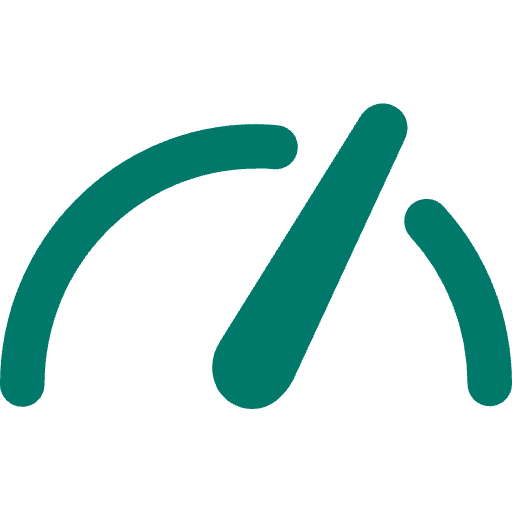
Indrahar Pass Trek
TREK DIFFICULTY
Difficult
TREK DURATION
10 Days
HIGHEST ALTITUDE
11,500 Feet
GROUP SIZE
12
TREK DISTANCE
125 km
BASECAMP
Himachal Pradesh
BEST TIME
September to June
PICKUP POINT
Himachal Pradesh
Indrahar Pass Trek Overview
Indrahar Pass, located in Dhauladhar mountain range of Himalayas, is on the border between Kangra and Chamba districts. There are excellent camping sites along this scenic trek. It begins in Dharamkot or Bhagsunag and passes through the Gallu Devi temple. After this, the path will take you through dense vegetation which will then give way to sprawling expanses of oak and rhododendron forests. One of the most notable highlights of the trek is the old Lahesh Caves. You’ll also find spectacular views of Kangra Valley and witness an array of mountains, streams and snow bridges. Such incredible offerings make the experience extremely special.
The terrain becomes slightly difficult after Triund. It passes through steep climbs, rocky patches, glacial streams and snow even in summer, but as you reach the final destination, the rewarding vistas of the Pir Panjal range and distant glimpses of Manimahesh Kailash make every step and effort worthwhile.
Indrahar Pass trek is best suitable for those who have prior trekking experience. The trek usually takes around 1 week (4-5 days) to complete and requires good physical fitness and mental endurance. The best time to start your trekking is summer and autumn. Indrahar Pass trek is such a rich and soul-exciting journey, you would never want to miss if you have an adventurous spirit.
History of Indrahar Pass Trek
Indrahar Pass, known for its raw himalayan beauty, has a great historical and mythological connection. The name Indrahar itself is very unique and is believed to be associated with Lord Indra, a deity of rain and ruler of swarg (heaven). According to locals, Indrahar Pass is believed the celestial gateway of the divine, and Lord Indra is believed to watch over this pass between realms.
Indrahar Pass was once used by yogis and devotees who travelled towards Manimahesh Kailash. Manimahesh Kailash is believed to be the sacred abode of Lord Shiva in Chamba. From Indrahar Pass, the distant glimpses of Manimahesh Kailash are still visible. The high-altitude caves scattered on the trail, like Lahesh Cave are said to be the places where those yogis and hermits meditated and prayed.
Indrahar Pass also served as a connecting path between Kangra and Chamba valleys. It was used by the local shepherd community, traders and pilgrims occasionally. You can still find the Gaddi community using this route to move their flocks between summer and winter pastures. Though the region has not been part of any major socio political events, it holds high importance in the history of Himachal and north Himalayas.
Highlights of Indrahar Pass Trek
- Panoramic Summit Views: Indrahar Pass trek is best known for getting panoramic and spectacular views of Himalayan ranges like Dhauladhar, Pir Panjal and Barabangahal. Even Manimahesh Kailash can be spotted on clear days. Not just mountain ranges but famous valleys like Kangra, Chamba and Dharamshala town can be viewed excellently from here.
- Triund Base Camp: Trek for Indrahar Pass passes through the famous Triund meadow. Triund is an iconic place and very popular among trekkers. It is often used as a perfect acclimatization point before ascending to high-altitude. The vibrant and peaceful surroundings of Triund offers a soul-satisfying experience to trekkers.
- Himalayan Wildlife Encounters: Indrahar Pass is a long trek and during the journey trekkers often encounter the diverse Himalayan wildlife. Black bears, musk deer, Himalayan monal, snow pigeon, golden eagle and colorful butterflies (in summer) can be spotted.
- Crossing Laka Glacier: The journey to Indrahar Pass is full of adventures. It includes crossing glacial sections. Laka Glacier remains snow-covered even in late spring and early summer. Crossing it demands physical and mental endurance but it's a thrilling experience in itself which trekkers usually enjoy the most.
- Rich Forest Diversity: Indrahar Pass trek pass through the dense forests of deodar, oak and rhododendron. During summer they look mesmerizing with their lush green appearances. These forests are vast and include mosses, lichens and medicinal herbs. Birds chirping on trees provides a peaceful experience.
Difficulty Level of the Indrahar Pass Trek
The Indrahar Pass trek reaches an altitude of approx 4,342 m and trekking here is considered moderate to difficult. It starts from McLeod Ganj and passes through Triund, Laka Glacier and ascends to the high-altitude of Dhauladhar range.
The trek is not suitable for kids and elderly people. Beginners with good fitness can attempt it with proper guidance and preparation. The terrain includes forested trails, rocky paths, boulder-filled ridges and glacial zones. Even in early summer, patches of snow are here which make the route slippery.
The most challenging section is to climb from Lahesh Cave to Indrahar Pass. It involves steep ascents and loose rocks and requires most attention. Though it doesn't consist of any technical climbing, hiring a professional guide or joining a team is highly recommended for safety.
The total duration of the trek is around one week (including travel days) and covers 35-40 km round trip. On average, trekkers have to walk 5-7 hrs daily, depending on pace and stamina.
Weather can be unpredictable, proper acclimatization is important. Chilly winds, sudden rain and sub-zero temperatures are common at higher altitudes. Proper packing of warm clothes and rain protection are essential.
Overall, Indrahar Pass is not a technically challenging trek but still requires caution and proper guidance. Trekkers having prior trekking experience like Triund or Kedarkantha can attempt it.
Best Time to Visit Indrahar Pass Trek
For trekking in Indrahar Pass, the best time or months are from April to June and from September to mid-November.
April–June:
During this time, sky is usually clear and trails come alive with the arrival of spring. You will get to see lots of blooming rhododendrons and wild flowers and lush green meadows. The sky is clear enough to view Dhauladhar and Pir Panjal ranges and glimpse of Manimahesh Kailash. The common daytime temperature remains around 12°C to 20°C and at night time it goes around 8°C to 2°C depending on weather.
September–November:
During this time, the monsoon is over and views become sharper and vibrant. The trail remains dry and trees' leaves turn golden-brown which give a warm and cozy feeling. The sky is clear and the wind feels crisp. Temperature remains same as spring, daytime it's 10°C to 18°C and at night time it's around 0°C to 5°C. Trekking in late November, you can face snowfall so better complete it before mid-November.
Avoid Monsoon (July–August): This time due to heavy rainfall, trails become slippery and inaccessible. The risk of leeches and reptiles is also there. Clouds can reduce or block the visibility of mountain peaks.
How to Reach Indrahar Pass Trek
Indrahar Pass trek is located near McLeod Ganj in Himachal Pradesh. The nearest major town is Dharamshala which is around 10 km from McLeod Ganj. You can reach Dharamshala by road via Volvo or HRTC buses from Delhi or Chandigarh.
By train, the closest railway station is Pathankot Railway Station, around 90 km away. From Pathankot, you can take a taxi or local bus to reach Dharamshala (3-4 hrs).
By air, the nearest airport is Gaggal Airport (Kangra Airport), located 20 km from McLeod Ganj. Regular flights from Delhi and Chandigarh connect this airport to major cities. You can hire a taxi to reach McLeod Ganj from here (40-45 mins).
Upon reaching McLeod Ganj, you can walk or take a cab to Gallu Devi Temple which is the common starting point of Indrahar Pass trek. The trail up to Triund is about 9 km and takes about 4-6 hrs to complete.
Upon reaching Triund, you can take a halt here or camp overnight. Next morning start your journey to Laka Got or Lahesh Cave. The path can be steepy and involves crossing glacial sections ahead. In final part, summit to Indrahar Pass and return.
Things to Carry in Indrahar Pass Trek
- Backpack (20–30L): Lightweight & comfortable
- Valid ID Proof: For registration at the forest checkpost
- 1 warm jacket/fleece
- Thermal innerwear (if trekking in cold season)
- 2-3 quick-dry t-shirts
- Trekking pants (avoid jeans)
- Raincoat (especially in monsoon)
- Woollen cap & sun cap
- Gloves (in winter)
- Extra socks & basic wears
- Good quality trekking shoes with grip
- Light slippers for campsite
- Tent (if not booking through a trek provider)
- Sleeping bag/mat
- Headlamp or torch (with extra batteries)
- Water bottle (minimum 2 litres)
- Electrolytes or ORS
- Energy bars, chocolates, dry fruits
- Toiletries
- Sunscreen
- Basic first aid kit (band-aids, antiseptic, painkiller, Diamox for AMS if going higher)
- Mobile + power bank
- Camera (optional)
- Trekking pole (optional but helpful)
- Small towel or napkin
- Garbage bag (leave no trace)
Day 1:
- Trek from McLeod Ganj (1,750 m) to Galu Devi Temple (2 km, 1–2 hrs).
- Continue to Triund (9 km, 4–5 hrs), camp for the night.
Day 2:
- Triund → Snowline Café → Laka Got (3–4 hrs). Optional stop at Snowline Café for refreshments.
- Camp at Laka Got or proceed to Lahesh Cave (1–2 hrs further).
Day 3:
- Lahesh Cave → Indrahar Pass (4–6 hrs, steep & rocky).
- Enjoy summit views of the Pir Panjal and Manimahesh Kailash peaks.
- Descend to camp at Lahesh Cave or Laka Got.
Day 4: Descend Triund → Galu → McLeod Ganj, or continue across pass.
In Himalaya Shelter, we provide you with the option to customize your Indrahar Pass trek experience. Whether you're an avid mountaineer, an adventure seeker or a group of friends, you can opt for our personalized tailor-made expedition program. This customized program will be exclusively designed for you, taking into account your specific requirements for transportation, accommodation, meals, technical equipment and any other premium facilities you may need during the trekking.
Starting from near McLeod Ganj in Dharamshala (pick up point), Indrahar Pass trek passes through scenic destinations like Gallu Devi Temple, Triund, Laka Got and Lahesh Caves. From Lahesh Caves, the final summit push starts.
Himalaya Shelter ensures your journey is safe and memorable with experienced local guides, technical support and all necessary permits. You can even request offbeat routes or sunrise hikes for a more immersive Himalayan experience.
Moreover, no other participants will be added to your group. Choosing a customized program will enable you to enjoy your journey without any hesitation.
Day 1: Dharamkot to Triund via Golu Devta | Trek: 10 km in 5 - 6 hrs
Day 2: Triund to Lahesh cave via Laka | Trek: 9 km in 5 -6 hrs
Day 3: Lahesh Cave to Indrahar Pass and trek to Chhata | Trek: 12 km in 6 - 7 hrs
Day 4: Chhata to Kuarsi via Mandhara | Trek: 14 km in 6 - 7 hrs
Day 5: Kuarsi-Hilling-Lamu (Approx 13km)-Donali by bus-walk to Brehi
Day 6: Kuarsi to Brehi via Donali and trek to Brehi | Trek: 16 km in 7 - 8 hrs, Drive: 1 - 2 hrs
Day 7: Brehi to Minikiani camp via Drakund | Trek: 20 km in 9 - 10 hrs
Day 8: Minkiani camp to Kareri Lake via Minkiani Pass | trek: 10 km in 4 - 5 hrs
Day 9: Kareri Lake to Kareri | Trek: 13 km in 5 - 6 hrs
Day 10: Kareri to McLeod Ganj | Trek: 8 km in 4 - 5 hrs
Our treks are specially designed by the experienced team at Himalaya Shelter taking you on an adventure of a lifetime all while making you connect not only with the bountiful nature but also with yourself and with others on the trek with you creating wonderful memories which will last you a lifetime. All Himalaya Shelter treks are guided by experienced Trekkers having vast knowledge and experience of the region, providing with insightful information and stories pertaining to the region’s flora and fauna and the history of the region whilst the trek. It is safe to say that on successfully completing the trek one will gain tremendous insight and experience along with lifetime memories.
Trek Inclusions
- Transportation - Support from Dharamkot
- Accommodation – At Base Camp, stay at a local homestay or guest house for one night each, which will give you an insight into the authentic lifestyle of the locals.( INR 5000 per person extra for single sharing throughout the trek )
On Trek stay in a 2-person Vango Halo Pro/A-Shape tent, which is to be shared by two trekkers, built to withstand extreme weather conditions and at the same time making you comfortable after a hard day’s trek. - Camping Equipment – specially designed sleeping bags that can withstand harsh weather conditions, foam mattresses. Other safety gear like microspikes, gaiters, an ice axe, and helmets will be provided.
- Medical Kit – our team will be equipped with an extensive medical kit, which our team is trained and experienced to use. Oxygen cylinders are used after they are thoroughly inspected throughout the Trek. Even campsites have large oxygen cylinders as backups.
- Permission - Forest entry charges for Indian nationals (Additional charges will be applicable for international tourists)
- Meals – Breakfast, packed lunch (on trek days), evening snacks, and dinner will be served. A hearty, delicious, and nutrition-filled Veg meals with egg preparation will be provided throughout the trek. (Jain and Vegan Food can also be arranged on prior notification.)There will be a dedicated Kitchen Tent along with a dining tent, which will have a dining table too.
- Our Team – A highly experienced and AMC-certified Trek Leader who will help ensure that the entire trek goes smoothly and safely while navigating the challenging conditions during the trek, and is skilled enough to navigate any medical emergency that can arise during the trek. Local and route Guides who are well-versed with the region and provide an in-depth insight into the local customs and knowledge of the flora and fauna endemic to the region. A dedicated Kitchen staff, which includes a Cook, a helper, and other support staff. There will also be porters and mules to carry common equipment.
- Cloakroom - We have a cloakroom facility available for extra luggage. Every trekker is permitted to leave their luggage behind at no charge.
Trek Exclusions
- Personal expenses like tips, personal medicines, phone calls etc.
- Travel Expenses - Travel expenses from your hometown to the mentioned Pick-Up Point are not included in the trek fee.
From the scheduled pick-up spot to the base camp, we have our own fleet of vehicles like Bolero, Innova, Dezire, or Tempo Traveler (12-seater). This is be shared by trekkers for a pre-decided amount. All vehicles are non-AC. - Personal Equipment - Any personal gear like jackets, shoes, cutlery, or backpacks are not included in the trek fee. We recommend renting them from our Rental Store for an affordable fee. This can be pre-arranged to avoid last-minute hang-ups.
- Offloading - We encourage carrying your backpack to get into the true spirit of trekking. However, if needed, you can opt to offload your personal luggage of up to 12 kgs for an additional cost of INR 500 per bag per day.
- Trek Insurance - A mandatory trek insurance fee is charged in addition to your trek fee. Since most medical insurance doesn’t cover adventure activities, trek insurance offers essential coverage, enhancing your safety without a significant financial burden.
- Buffer day on the trek - We have kept a buffer day on the trek to account for any weather-related delay. If this is utilized, you will need to pay an extra amount to your trek leader.
- Anything apart from inclusions
- Please carry a lunch box for a packed lunch/breakfast to avoid using polythene and Aluminium foil.
Keeping the Himalayas clean is our own responsibility. Reduce the use of Plastic when you are in the abode of the Sacred Himalaya. 🌱
In the Dhauladhar Range, Himachal Pradesh, near McLeod Ganj.
Around 4,342 meters (14,245 feet).
The trek starts from McLeod Ganj or Dharamkot.
Typically 4–5 days, depending on the route.
Yes, it’s a moderate to difficult trek.
Recommended but not mandatory with good fitness.
May to June and September to October.
Cold and windy; sub-zero temperatures at night.
Yes, especially pre-summer and post-monsoon.
Limited or no network beyond Triund.
Possible but not recommended due to difficult terrain and weather.
Yes, up to Triund; none beyond that.
Read More on Indrahar Pass Trek
Treks by Categories
Treks By Month

Treks By Experience





